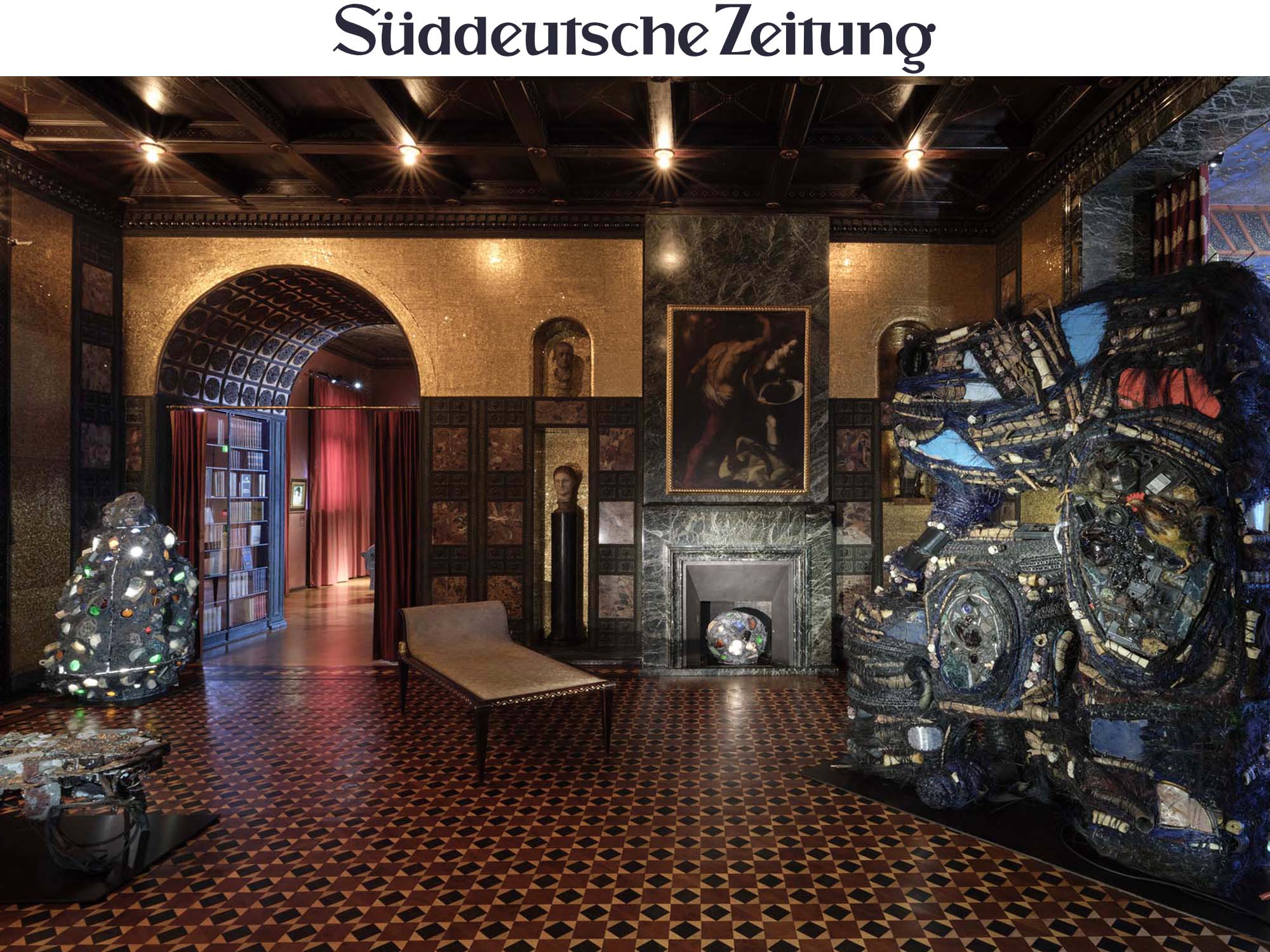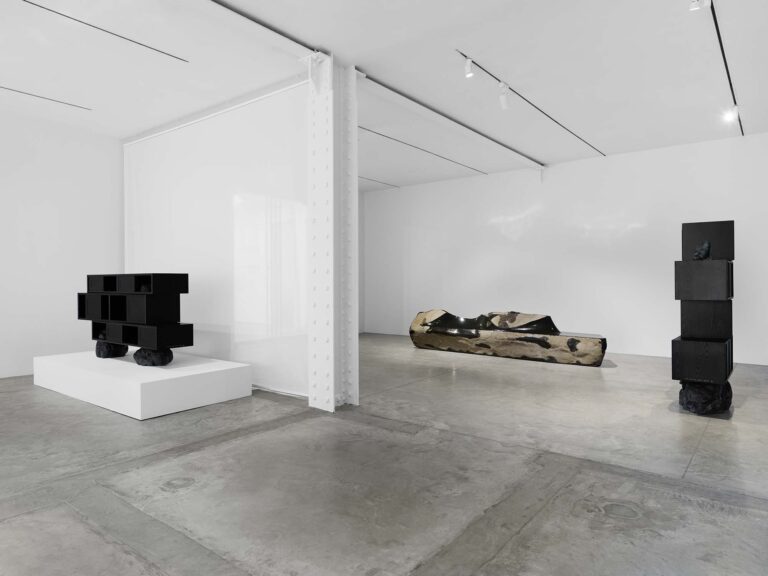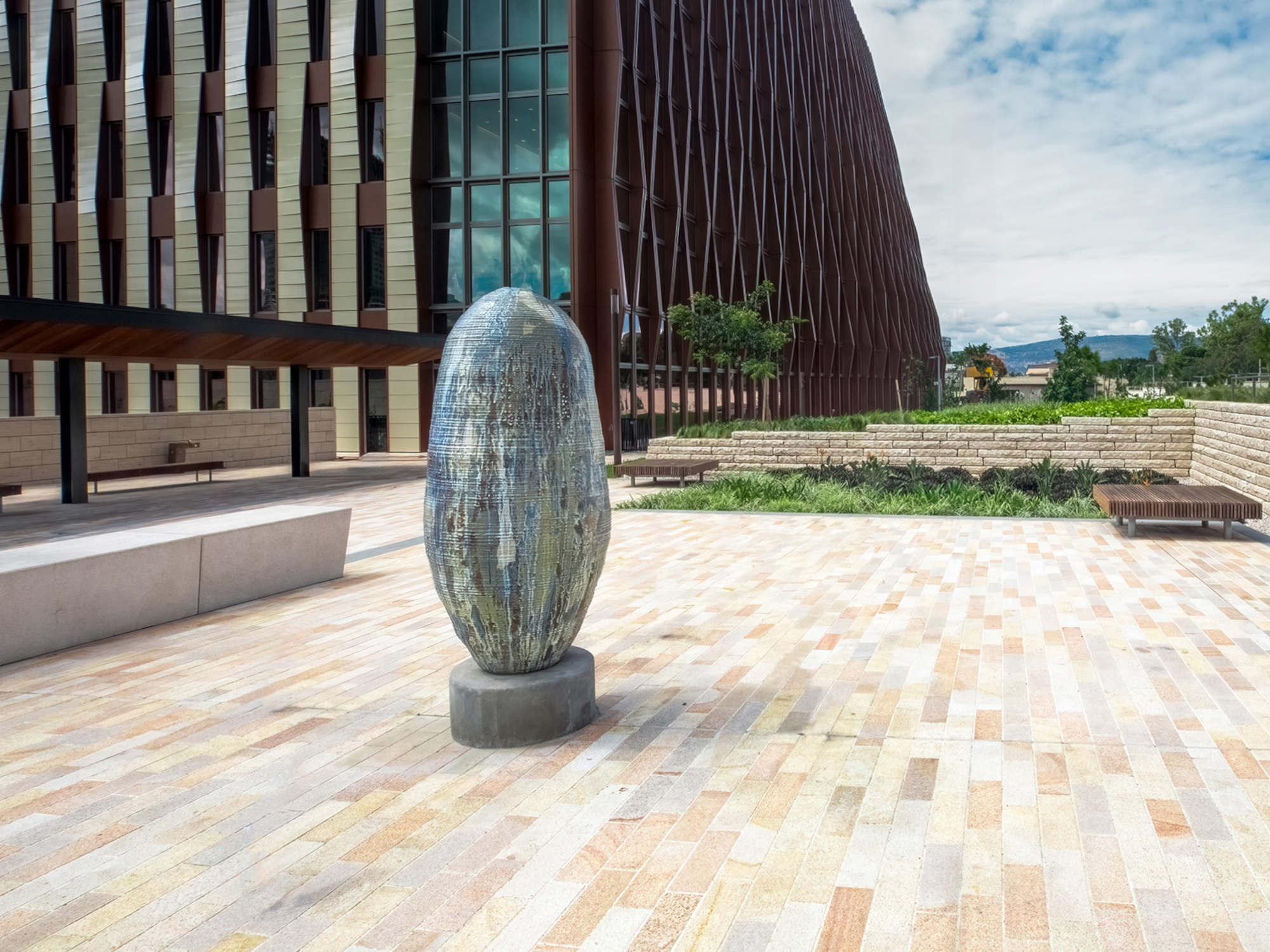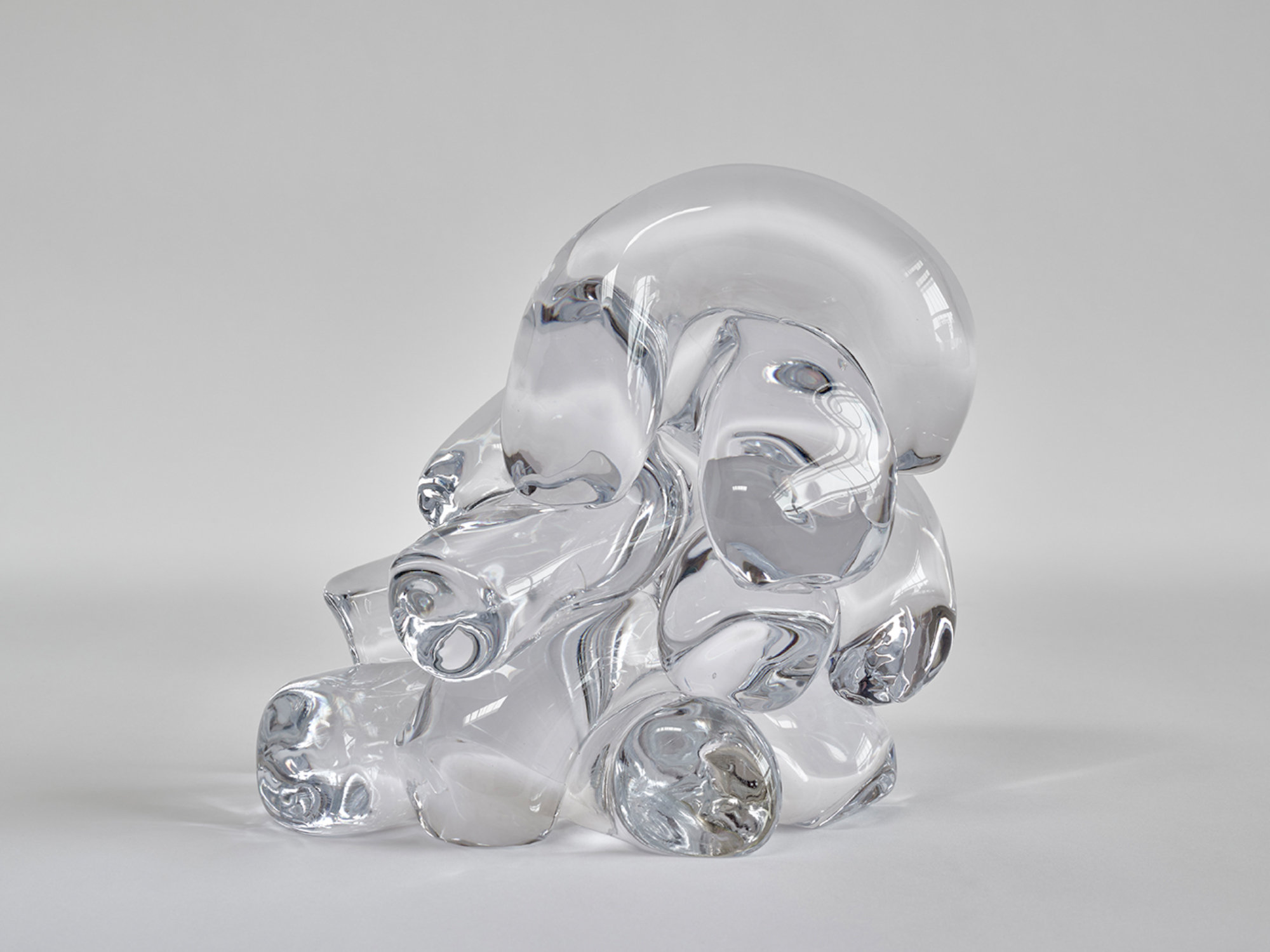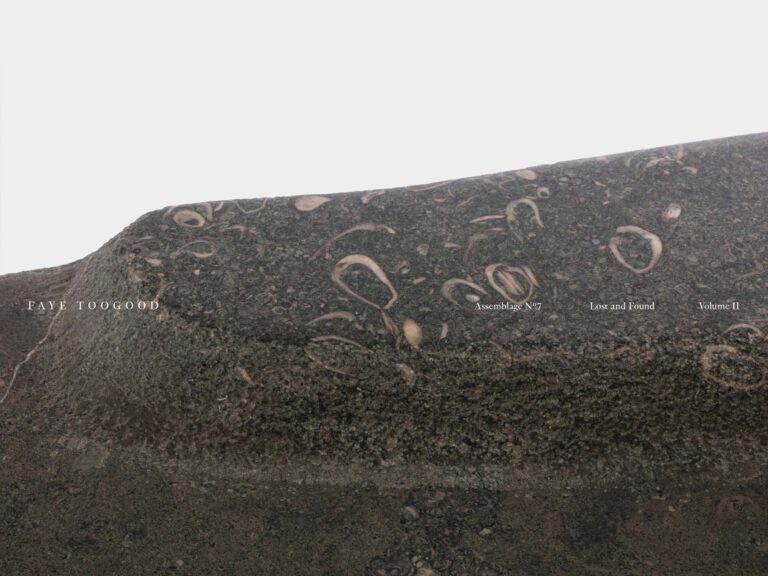By Evelyn Vogel
Wow, what kind of colorful, crazy, fabulously exuberant and at the same time socio-politically profound world is Misha Kahn taking us to in the Villa Stuck? Anyone who rubbed their eyes in amazement at his furniture and objects made of found and transformed material at the design fair in Miami last year, where the then 32-year-old received the award for “Best of Show Contemporary Work 2021”, can now go to one bathe in abundance of ideas. The monstrously funny structure alone, which puffs up on the studio terrace with the same naturalness as the larger-than-life copies of ancient statues occupy the attic, is a promise, which is best viewed from the opposite side of the street.
The course of design pieces and artworks that Misha Kahn, with the curatorial support of Kellie Riggs, then created in the new Villa Stuck exhibition entitled “Under the Wobble Moon. Objects from the Capricious Age” is wonderfully entertaining, and is always in dialogue with the architecture, furnishings and works of art by Franz von Stuck. Therefore, it was already clear to the museum’s employees where the pieces should be placed when they were unpacked. Not only objects from the past seven years are shown, Kahn also created about half of the exhibition for the rooms of the Villa Stuck. This is how the most comprehensive exhibition of works by Misha Kahn to date and the first in Europe came about.
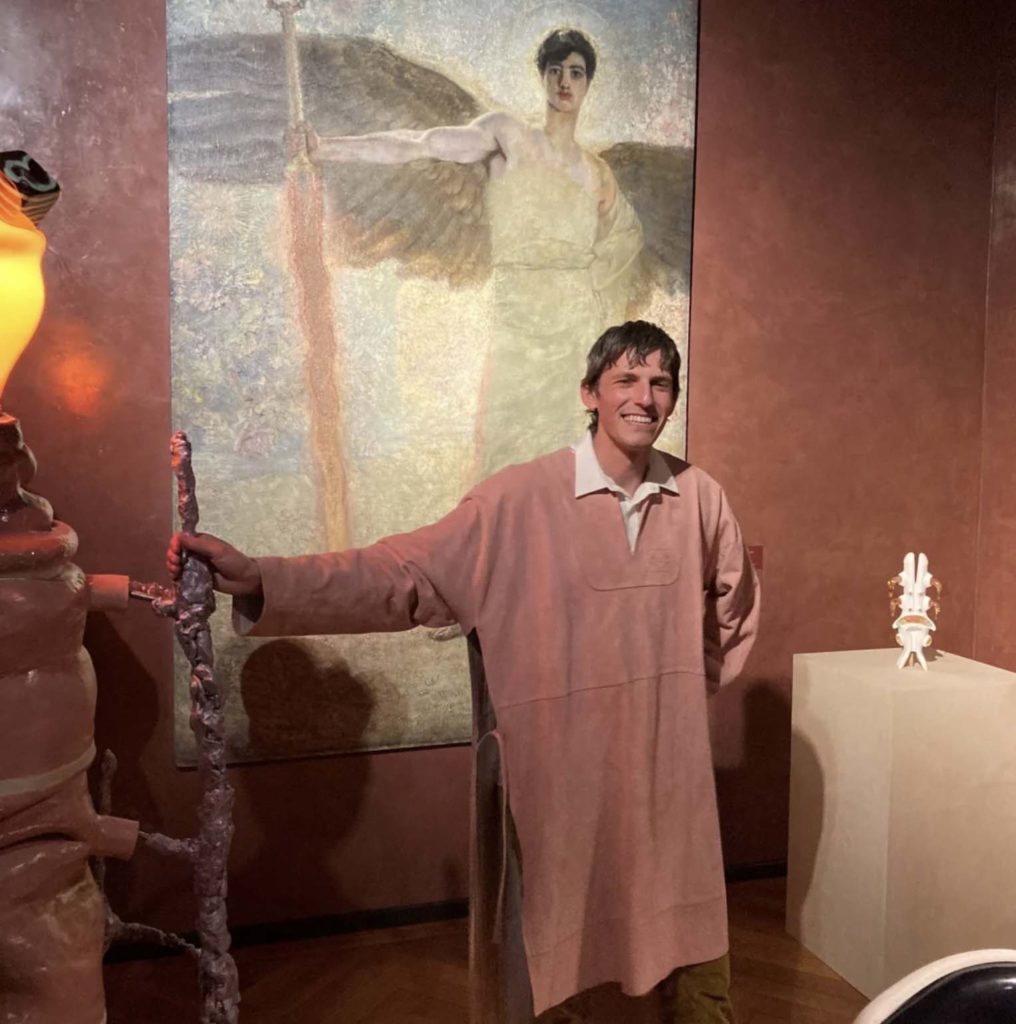
He saw a certain parallelism between the host and himself, says Misha Kahn at the preview of the museum’s friend association. The painter Stuck, who also became an architect and designer when building the villa; he, the designer, who now also works as a painter. And indeed: Unconventional total works of art are inherent in both. Clothed in a medieval-looking, antique pink bodice made of something that looks like suede and reaching down to his knees, on his feet light a pair of bulging slippers that could have come from a 3D printer, Misha Kahn stands rather shy in the midst of astonished listeners, as he tells it. Finally, he allows himself to be persuaded to lead through the show himself, opens a hidden door on a drum in the reception room, points out the revealing underside of a chair on a mirrored pedestal in the smoking room, turns one of the pieces of jewelry in the music room and its embedded gemstones shoot through the winding corridors in the pinball machine, or – the advantage of the preview – lets the guests touch individual objects in order to experience the feel of the materials.
What turns out to be particularly surprising are the wall objects in the smoking room, for example. The forked red tongue of the grotesque structure on the wall feels like a warm bulge made of silicone, making it appear even more alive. But the table in the dining room with its biomorphic appendages is also irritating, as it is made of plastic but feels like ceramic. Visually, Kahn creates impressive parallels, for example by placing a figurative sculpture, which is actually a lamp, next to the Guardian of Paradise, so that both seem like brothers in spirit.
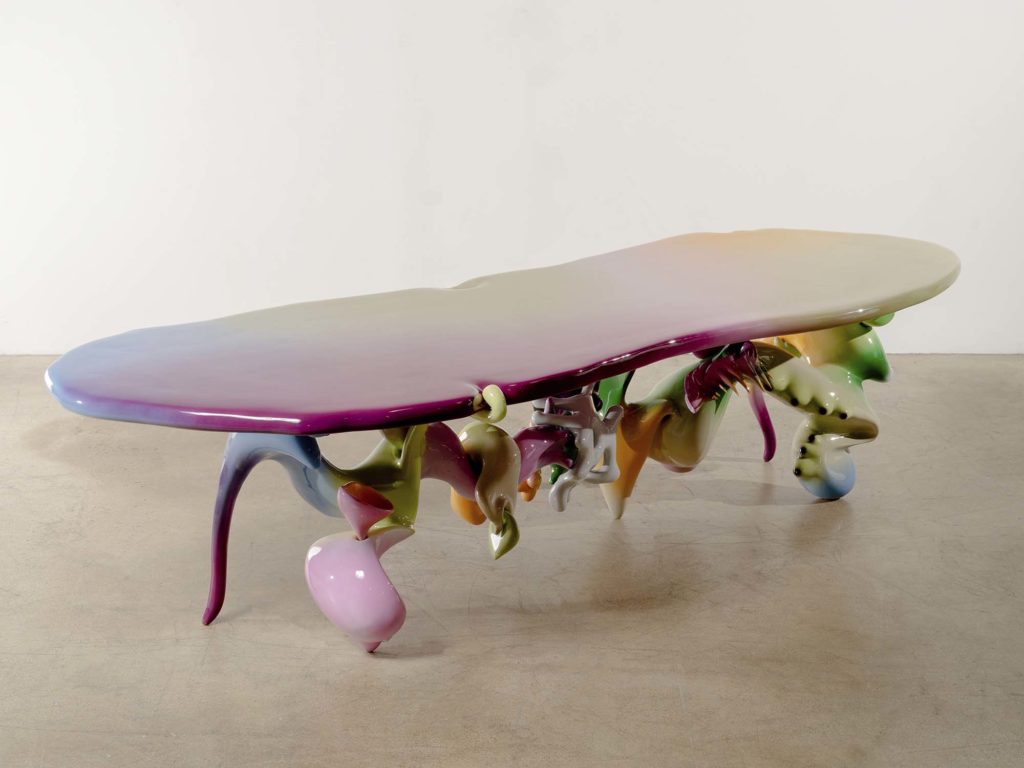
Born in 1989 in Duluth, Minnesota, Kahn studied at the Rhode Island School of Design and graduated in 2011 with a Bachelor of Fine Arts in furniture design. Renowned for pushing boundaries, he challenges conventional notions of design as well as manufacturing methods, and reinvents himself almost constantly. He uses plastics, metal, glass, wood, textiles, ceramics, cast bronze, fiberglass and cement for his art, jewelry and design objects. The mix of materials is as varied as its effect is surprising. He combines traditional craftsmanship with the most modern techniques as a matter of course. His desire to experiment seems unlimited, but he also works with master craftsmen to learn and understand. This is how Kahn’s highly acclaimed “Woven Scrappy Series” (since 2015) was created in collaboration with Gone Rural, a group of traditional weavers from Swaziland. The motif of the tapestry exhibited in the old studio is extremely modern and appears to have been woven from an augmented reality template. And when it comes to jewelry and watches, he also relies on luminaries in the respective disciplines beyond the design.
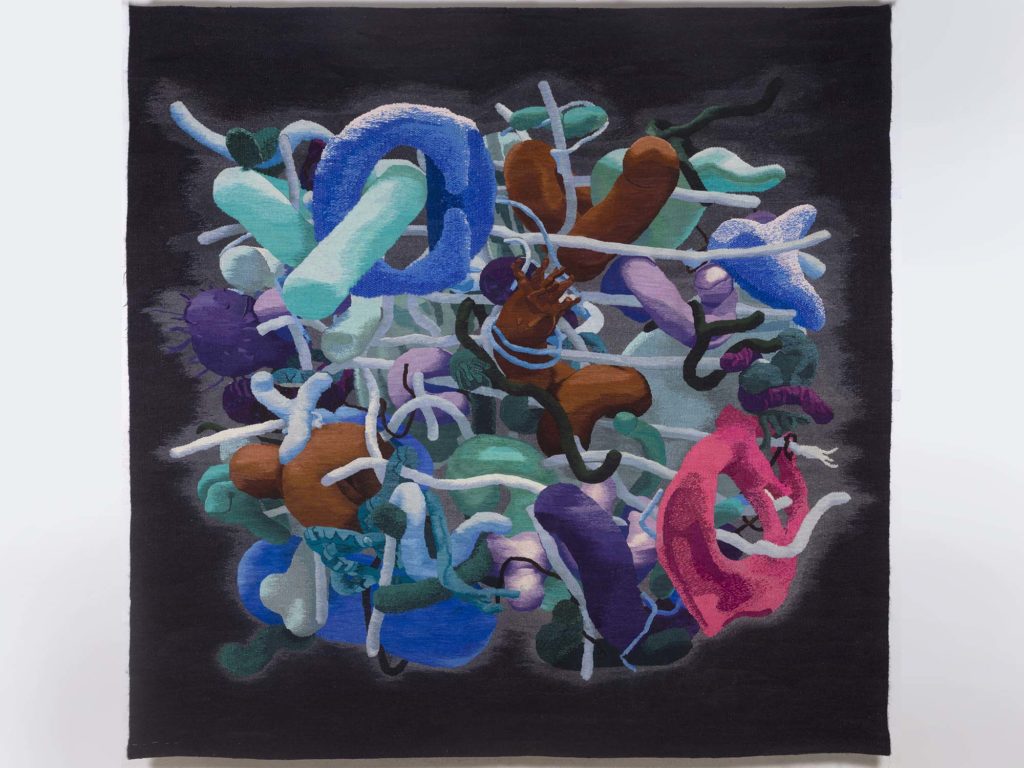
Located at the interface between design and art, Kahn creates a “metaverse” in which things play a major role that others throw away. He collects, processes and refines them, suitably tuned up for our age, which he calls a capricious one. If you delve deeper into Misha Kahn’s world of thoughts, you will encounter a network of relationships between people and nature, technology, the age and themselves. It is not a must, but an absolute plus, to download the so-called audio guide (available in German and English). Whether it’s a waste or food problem, the exploitation of nature or a climate catastrophe, self-optimization, industrialization or digitization – Kahn and Riggs have not designed an art-historical guide through the exhibition, but a literary booklet in audio format that you can listen to on site as if you were at home, in which such great terms as “particleization” or “grating disruption process” appear.
In general, the overall view is characterized by a huge portion of wit and irony, and one can hardly imagine what it’s like at Misha Kahn’s home, which, by the way, is in Brooklyn. The exhibition itself runs through the historic rooms on the ground floor, goes through the old studio on the upper floor to the former private rooms and ends in the artist’s garden, where there are some sculptures and a robot, pardon “Automatic Worker” called “Røbopièrre”, which was used during the exhibition period makes paintings. Because the fact that the artist also defines the process of painting a little more unconventionally than others shouldn’t come as a surprise after a tour of Misha Kahn’s metaverse.
Misha Kahn: “Under the Wobble Moon. Objects from the Capricious Age”, Museum Villa Stuck, Prinzregentenstr. 60, on view until August 21st
